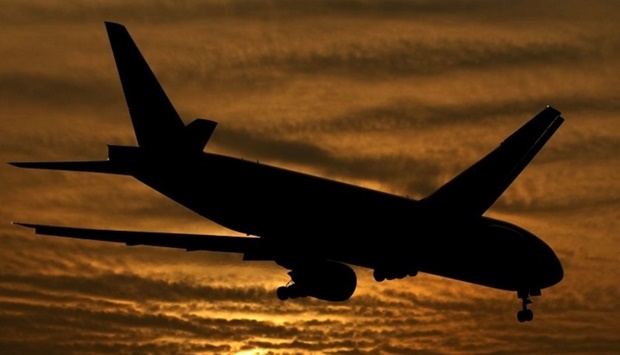| Beyond the Tarmac |
But fresh investments totalling billions of dollars are required to get there, which the global body of airlines says is an “enormous undertaking”.
The new industry target will take a combination of sustainable aviation fuels (SAF), radical airframe designs, cutting edge propulsion methods, efficiency gains, carbon capture technology, and offsetting, IATA says.
Certainly, it is an enormous task given that projections suggest 2050 demand will be in excess of 10bn passengers per year. If the industry carried on flying as it is today — a business-as-usual approach — by 2050 it would have emitted approximately 21.2 gigatonnes of CO2.
SAF can reduce CO2 emissions 80% or more. They are produced from a number of sources (feedstock) including waste oil and fats, green and municipal waste and non-food crops. They can even be produced synthetically via a process that captures carbon directly from the air.
Crucially, SAF feedstock does not compete with food crops or water supplies, nor contribute to forest degradation.
By 2025, it is estimated that there will be 11 technical pathways to producing SAF. And by 2050, SAF could contribute about 65% of emissions reduction needed.
A massive increase in production will be required though, IATA noted. The largest acceleration is expected in the 2030s as policy support becomes global, SAF becomes competitive with fossil kerosene, and credible offsets become scarcer.
The industry plan for net-zero carbon emissions foresees a rapid decline in the use of offsets as in-sector solutions take over. But offsetting mechanisms, including carbon capture technologies, will be vital in the next decade or so and continue to be integral to achieving the overall industry target.
The Carbon Offsetting Reduction Scheme for International Aviation (CORSIA) is the main pillar. CORSIA aims to stabilise aviation’s net CO2 emissions at 2019 levels from 2021 onwards and will be implemented in phases.
Until 2026, only flights between countries that volunteer to participate in CORSIA will be subject to offsetting requirements.
From 2027, virtually all international flights will be subject to mandatory offsetting requirements, covering more than 90% of all international aviation activity. Exceptions include developing countries and small island states.
The criteria for offsetting measures are being closely scrutinised. Forestry and natural climate solutions are already available. Some 15-20% of the world’s greenhouse gas emissions come from deforestation but there are challenges in reversing this trend. Reforestation and protection must be permanent, and the needs of indigenous communities must be considered, for example.
Offsetting measures on the horizon include direct air capture (DAC), which removes CO2 directly from the atmosphere. It is estimated that up to 30,000 large DAC facilities would capture some 30 gigatonnes of CO2 per year.
Carbon capture utilisation and storage (CCUS) is a technology that can capture up to 90% of the CO2 emissions produced from the use of fossil fuels in electricity generation and industrial processes.
Already, operational and infrastructure efficiencies have resulted in a 55% improvement in fuel burn per passenger kilometre since 1990.
Retrofitting winglets enables airlines to save more than 4% in fuel, and reduce aircraft noise and NOx emissions, for example. Over 9,000 aircraft have been retrofitted, saving over 100mn tonnes of CO2 since 2000.
The overall fuel efficiency of the industry fleet is about 80% better than 50 years ago, IATA noted. Geared turbofan engines and further advances in design will drive a further 15-25% fuel efficiency improvements over the next two decades.
But from the mid-2030s, radical new propulsion technologies and advanced designs promise even greater benefits. The first step is likely to be hybrid-electric concepts. When combined with a new airframe body, such as a blended wing, CO2 reductions of up to 40% are possible.
Smaller, fully electric aircraft could also appear around this time, IATA points out. Norway has the goal of operating all domestic and short-haul flights electrically by 2040. Electric flights would completely eliminate CO2 emissions.
Experts says hydrogen is another possibility. It is lighter than jet fuel but takes up much more space. Much larger tanks and fundamental changes in the aircraft fuel system are therefore needed. Entry into service is envisaged around 2035.
New airframe designs will need to be developed to realise the potential of new propulsion methods. A canard wing has the main wing being set further back behind small forewings. These could be in production from 2035-2040.
A blended wing uses the entire plane to generate lift, enabling huge fuel savings. Strut or truss-braced wings would enable larger more efficient engines to be used, such as open rotors.
Both Airbus and Boeing are working on radical new designs as are other airframe manufacturers.
IATA said it is strongly encouraged by the adoption of a Long Term Aspirational Goal (LTAG) to achieve net-zero CO2 emissions by 2050 at the recent 41st Assembly of the International Civil Aviation Organisation (ICAO).
IATA’s Director General Willie Walsh said: “The aviation industry’s commitment to achieve net-zero CO2 emissions by 2050 requires supportive government policies. Now that governments and industry are both focused on net zero by 2050, we expect much stronger policy initiatives in key areas of decarbonisation such as incentivising the production capacity of Sustainable Aviation Fuels (SAF).
“And the global determination to decarbonise aviation that underpins this agreement must follow the delegates home and lead to practical policy actions enabling all states to support the industry in the rapid progress that it is determined to make.”


